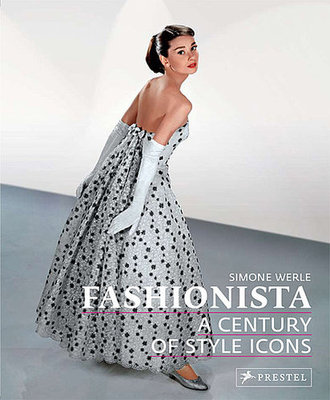The book is sectioned into 10 categories ranging from The Classics, to The Bombshells, to The Rebels. Each of these sections dedicates two to four pages detailing the lives of the woman that fall under their category. There are 50 different women highlighted in the book, some of whom I know well, like Audrey Hepburn and Marilyn Monroe, others who were completely new to me, like Babe Paley and Diana Vreeland. I found it most intriguing the way each woman viewed their own style. Some could pinpoint exactly what made up their dress each day, others laughed at the thought of being a fashion icon, claiming they simply pulled what they liked and wore it.
As I read each woman’s story, I became agitated by one reoccurring theme usually beginning with “a millionaire’s daughter”, “married into enormous wealth”, “reared in a wealthy environment”, “Italian aristocrat”, you get the point. I began to wonder exactly what made a woman stylish, did having a ‘sense of style’ really have anything to do with it? Or was a stylish woman simply stylish because she had the ability to buy style? As I read further I yearned to find a woman who was deemed an icon simply due to her creativity. First I found Marilyn Monroe, raised in several foster homes never knowing money, but who then exploited her body for fame. Not the woman I was looking for. Then Josephine Baker, the daughter of an impoverished washerwoman, but who simply gained her fame by wearing nothing more than a few strategically place diamonds. Yet again, not endowed with enormous wealth, but who only found fame through self-exploitment. I began to worry that these woman I looked up to as icons were own products of their own wealth. But then I found an unlikely hero: Gabrielle “Coco ” Chanel. As a woman born into poverty and raised in an orphanage, she seemed destine for the same path as Monroe and Baker, instead she became a symbol of elegance for woman of the 50s and 60s. She did this by “taking note of what it took to be successful in a business—vision, discipline, strategic thinking, and the ability to assert one self” (78). As a woman who thought ahead of her time, her creativity was met with practical design. As a designer, she “challenged her clients to be independent and self-sufficient”. In Coco Chanel I found a woman who could be looked up to and admired as an icon of fashion for the real woman.
The research of fashion history I have done through this book will no doubt give me confidence through knowledge as I continue on my journey. As I now know the various women who defined each generation of style, I hope to next journey into the origins of fashion during the 20th century and into the 21st.
Marilyn Monroe
Josephine Baker
Coco Chanel




No comments:
Post a Comment